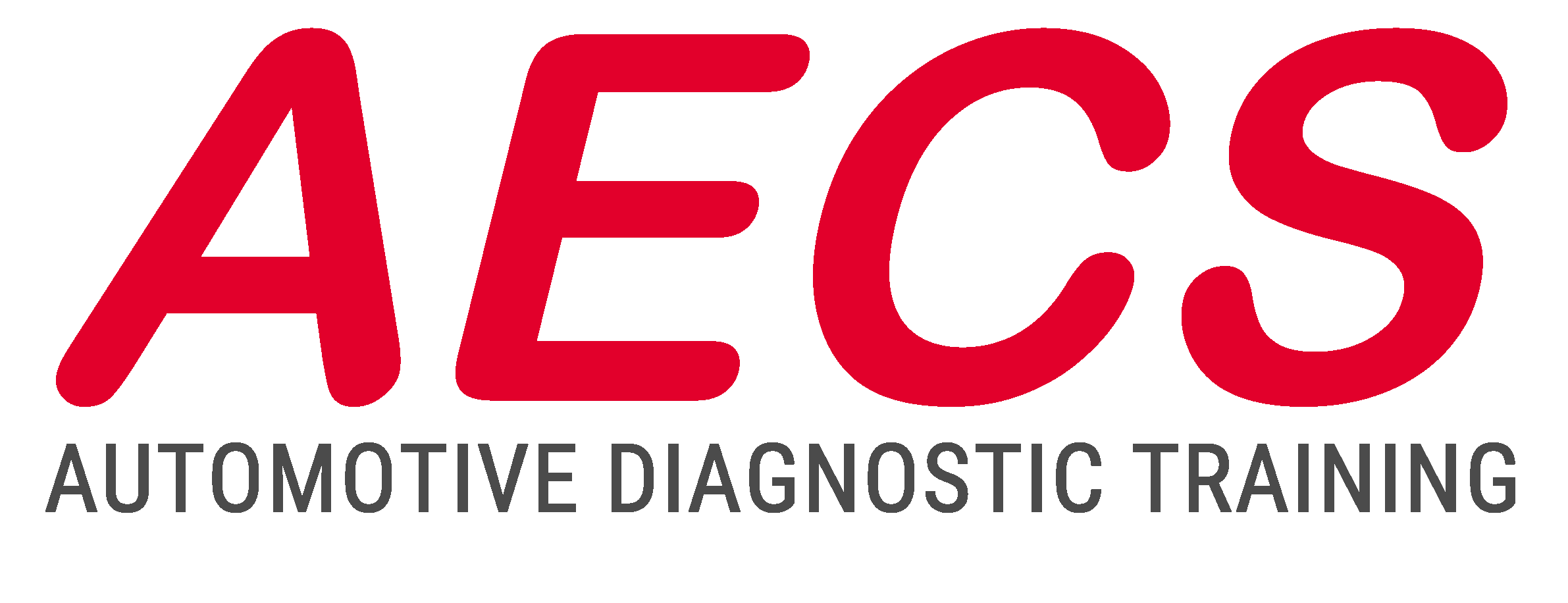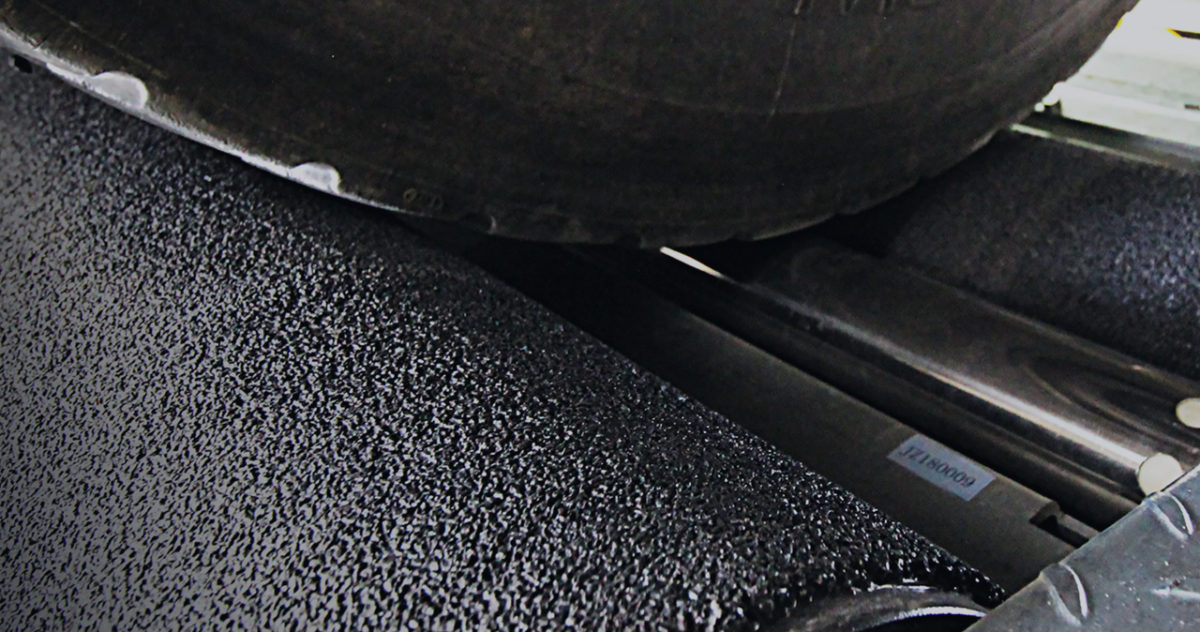[this is an updated article from our technical articles in 2004]
The grip coefficient (f) is the relation between weight and brake force. We can all understand that an empty box is easier to slide over a surface than the same box with weights in it.
We can also relate to the fact that that same box with weights is harder to slide (brake force) over a tar sealed road than on black ice.
The simple formula G (weight) x f (friction coefficient) = B (brake force) puts this all in perspective.
Dry
A dry concrete road has a friction coefficient of approx. 0.8, if we now work with an axle weight of 2000 kg’s we end up with a brake force of 2000 x 0.8 = 1600 kg’s.
Brake force is in general expressed in Newton or Kilo Newton (KN). 1 Kg is approx. 10 N
The resulting 1600 Kg brake force would be expressed as 16KN for the axle. That returns a brake force of 8KN per wheel, which is the value we can read on our roller brake testers.
Wet
A wet concrete road has a friction coefficient of approx. 0.5, the same wheel will now exert a brake force of 2000Kg (axle) x 0.5 (f) = 1000 Kg 1000 Kg x 10 (N) = 10KN, 10 KN / 2 (per wheel) = 5 KN.
Simple isn’t it? That nicely explains why a vehicle has a longer brake distance on a wet road, something we all knew already anyway.
Roller Surface
The trick for brake tester manufacturers is to achieve a friction coefficient on their roller surface as consistent and high as possible. The effect of wet and cold tires on the friction coefficient needs to be as minimal as possible to test the brakes each and every time to the max.
I am sure that you can relate to that a new and ‘grippy’ brake roller tests the brakes to a higher degree than old worn smooth rollers. In some older test lanes, you can sometimes even find nice and shiny rollers, I sometimes wonder what the friction coefficient would be on those.
According to research the corundum and open cast surface rollers have a tendency to fill up with rubber and dirt reducing the friction coefficient.
A lower friction coefficient has as a direct result a lower brake force reading. The friction coefficient (f ) of 0.85 on the VTEQ rollers results in the same 2000 Kg axle in a maximum brake force of 8.5 KN per wheel.
Brake Efficiency
What are the results of brake force on brake efficiency? Brake efficiency is after all the data that we need for our WoF. The brake efficiency is simplified to the relation between the vehicle’s weight and total vehicle brake force.
The legal minimum brake efficiency for service brakes is 50%.
Let’s play with this given fact and the above example. To make things easy I will only focus on the single axle with the (static) weight of 2000 Kgs.
If on an axle with a weight of 2000 Kg’s a brake force is measured of 5 KN per wheel the efficiency is 5 (KN) x 2 (wheels) = 10 KN / 10 (Kg’s) = 1000Kg’s 1000 Kg’s brake force on an axle of 2000 Kg’s weight returns an efficiency of 50%.
With multiple axles the whole calculation stay’s the same; the total vehicle weight is divided by the total brake force.
Weight Measurement
To me as an engineer, it seems an absolute must to have a weighing system on a serious brake tester. Let’s look at the effect of an incorrectly guessed weight on brake efficiency. We’ll use the 8.5 KN of brake force measured with the 0.85 friction coefficient rollers.
Look at the 2000 Kg axle and guess weight of 1800 Kg’s, this results in a brake efficiency of 94.4 %! Look at the axle and guess a weight at 2200 Kg’s, the result is 77.27% brake efficiency.
Needless to say that a wrongly calibrated machine (weight and brake force!) have the same grossly faulty readings as result.
Can you accurately guess the weight of an axle or whole vehicle? We are talking about a safety test here!
Then to top it all off I was present during a test on a brake tester where a vehicle had a 104% efficiency on the front axle! That is impossible, yet the operator of this reputable company thought nothing of it. Obviously, this company had a double problem, the equipment was not calibrated properly and the training of the operator fell awfully short.
LTSA
A perfect initiative was started by the LTSA (now NZTA) in late 2002 to regulate and control those matters. It is my understanding that currently, no technical requirements for roller brake testers exist, nor for the calibration of this equipment. The LTSA is working hard to get this obvious safety issue out of the way. An initiative that AECS welcomed with open arms, as our equipment is used in many countries around the world within some of the most stringent safety laws on the planet.
Nice
Some of the features that you will have with a digital (computer-controlled) machine are that a brake ovality test and residual brake force test are standard on all axles including the parking brake. We all know that a pulling car does not always have misaligned wheels. The reported workshop sales as a result of those two features are tremendous.
4WD
Our equipment comes all (except the entry type) with 4WD/AWD testability standards. The machine will start both wheels at the same time with one rolling in the reverse direction to keep the driveshaft stationary. Only the forward rotating wheel is being tested. In the next cycle, the rollers are reversed and the other wheel on the same axle is being tested. Both results are set off against each other to determine straight braking and to calculate axle efficiency.
Explore
AECS has the latest car & truck brake testers. Explore more here.

